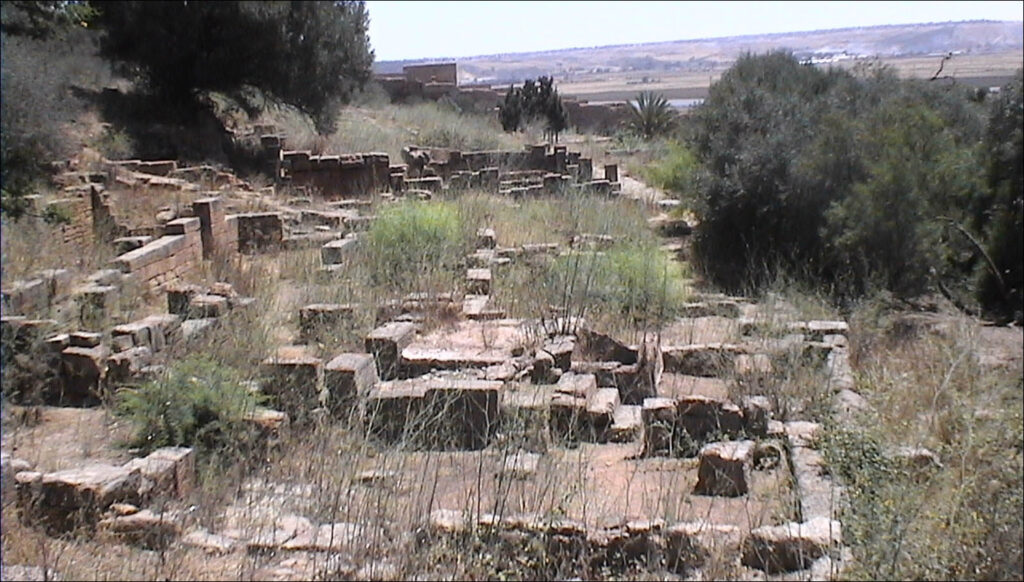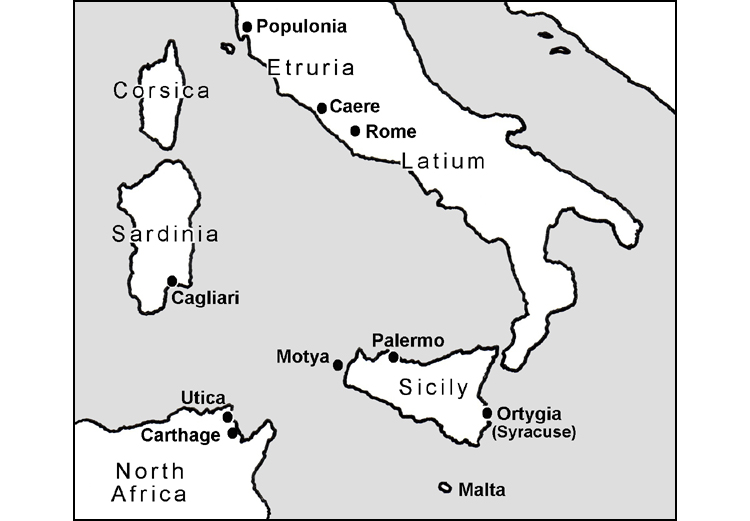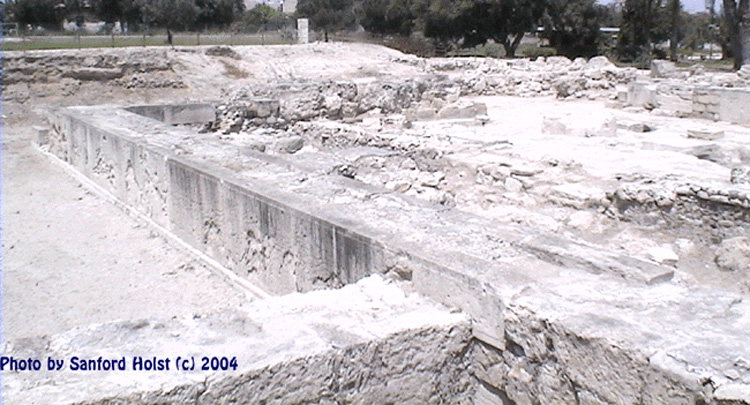
Around 1100 B.C. the Phoenicians began creating colonies all across the Mediterranean — even on the Atlantic coasts of Europe and Africa. The first colonies were Cadiz on the Atlantic side of Spain, Lixis on the Atlantic side of Morocco, Utica on the coast of North Africa, and Kition on the island of Cyprus. More followed on Sicily and Sardinia. When combined with the Phoenicians’ earlier cities along the east coast of the Mediterranean, that was an impressive span of settlement. But there was more to come.
Carthage
They created a large and rich colony at Carthage, near the older settlement of Utica, and began a new stage of rapid growth. (For additional information see Carthage and Hannibal Barca.) Spurred on by competition from the Greeks who began to settle in southern Italy and eastern Sicily, the Phoenicians planted more colonies all around the Mediterranean. Details of these settlements are shown in Chapters 13 to 21 of the book Phoenicians: Lebanon’s Epic Heritage, along with maps and descriptions recounting their adventurous early days.
Spain
The early colony at Cadiz — known to the Phoenicians as Gadir and to the Romans as Gades — was gradually joined by more cities: Abdera (modern Adra), Sexi (modern Almuñécar), Malaka (modern Malaga) and Carteia (on the Bay of Gibraltar). On the Spanish island of Ibiza was the colony of Ibshim, called Ebusus by the Romans.
Morocco
Lixis, the early center of Phoenician settlements in Morocco, was called Lixus by the Romans and today is Larache. The others cities which joined it are: Tingis (modern Tangier), Sala (modern Rabat, the capital of Morocco), Zili (modern Asilah) and Mogador (modern Essaouira).
Algeria
The Phoenician colony of Ikosim was called Icosium by the Romans and became modern Algiers, the capital of Algeria. Their other significant colony in this land was Hippo (modern Annaba).

Tunisia
Utica was the oldest Phoenician colony in what is now Tunisia and — after the passing of Carthage — it regained its position as the leading city of the region. In total magnitude and splendor, however, Carthage rightly was known as the greatest Phoenician city in this land. Other colonies here were: Hippo Diarrhytos (modern Bizerte), Hadrumetum (modern Susah), Thapsus and Acholla.
Libya
The colony of Oia, also called Oea, eventually became Tripoli, the capital of Libya. The other local colonies were Leptis (surnamed Magna by the Romans) and Sabrata.
Sicily
The first prominent Phoenician colony here was at Ortygia, but when the Greeks arrived and took over eastern Sicily, this island port became known as Syracuse and went on to greater glory. After the arrival of the Greeks, the major Phoenician colonies were on the western part of this island, located at: Motya, Panormus (modern Palermo) and Solus (modern Solunto).
Sardinia
Early settlements were at Nora and Karalis, which is now known as Cagliari and is the capital of Sardinia. Sulci and Tharros also had early colonies, which were eventually joined by many others across the island.
Malta
The Phoenicians surprisingly lived among the Maltese people, for reasons explained in Holst’s book, so they had few distinctive colonies here. The two main islands of Malta are believed to draw their names from the Phoenician Melita (modern Malta) and Gaulos (modern Gozo).
Pantelleria
Located here was the colony of Kossyra.

Cyprus
The main Phoenician city here was Kition (modern Larnaka) where the remains of significant buildings are still visible. Over time a greater, then lesser, part of the island came under Phoenician influence.
During the course of the Punic Wars (264 – 146 BC), Rome took almost all of these colonies from the Phoenicians. In fact, acquiring these Phoenician lands gave Rome its first foreign provinces, and enabled it to appropriately be called an empire.’
The content of this website is drawn from the research of historian Sanford Holst

Updated October 2, 2023
CLOUD: Phoenician colonies, Carthage, Tripoli

Further information
If you would like to experience more of the Phoenician world than you find in these short articles, see the book Phoenicians: Lebanon’s Epic Heritage. This extensive exploration is brightened with 104 illustrations.
Going beyond the few traditionally-cited facts, this authoritative work draws from discussions with leading archaeologists and historians to discover new clues and lines of inquiry into this secretive society.
Phoenicians
You can take a look inside this book. See the first pages here.
